 Do green building practices include low EMF and RF radiation exposures? The answer is usually NO. Green building practices usually do not address EMF and RF exposure and reduction methods. We have a look at the use of DECT cordless phones indoors and the exposure pattern and the desirable elements in cordless phones.
Do green building practices include low EMF and RF radiation exposures? The answer is usually NO. Green building practices usually do not address EMF and RF exposure and reduction methods. We have a look at the use of DECT cordless phones indoors and the exposure pattern and the desirable elements in cordless phones.
What Does Green Mean?
The term “green” is the magic word of today and is being use ubiquitously with many products and processes for the indoor environment. But want does a “green” building actually mean and entail? Do we mean:
- Natural materials?
- Non-toxic materials?
- Sustainable materials?
- Energy efficiency?
- Recycled materials?
- Low emission materials?
- Low carbon foot print?
Most of us are familiar with indoor environmental quality. But does that also include low EMF and RF environments? This presentation will provide an insight on how a small common household item can have a major impact on our electromagnetic environment inside our buildings. We will review some low emitting or “green” devices which are available.
DECT Technology Has Finally Reached US Shores
Beginning last year, phones of the DECT 6.0 generation started flooding the US market. DECT is the abbreviation for Digital Enhanced Cordless Telecommunication technology. In the last decade, only Europeans used this technology and were confronted with its headaches.
The 2.4 GHz band has been used by the majority of cordless phones in the last five years. However, this band has become crowded with devices such as microwave ovens, wireless area networks (WLAN), Bluetooth, cordless phones and remote control devices. This has led to interference and performance issues so the manufacturers have moved to the 5.8GHz frequency band and the DECT 6.0 technology.
The problem with the DECT phones is that the base station is permanently sending (radiating), 24 hours a day, no matter if the system is in use or not. Indoor environmental consultants have rallied against their use for decades. There were so many outcries that it had an impact. Major European manufacturers now offer environmental safer versions, with sleep mode or reduced output in stand by mode.
Regulatory Standards
Regulatory maximum exposure limits are set by the FCC (Federal Communication Commission) for cellular providers and OSHA (Occupational Health and Safety Administration) for employee workplace safety. These regulatory exposure threshold limits are high and are solely based on the thermal heating effect of microwave radiation. However, many scientists and research publications have shown that other biological effects exist below the thermal threshold. The question the researchers and physicians are grappling with is if these effects have negative biological effects? Table 1 provides you with an overview of different international regulatory standards and recommended precautionary limits by different entities.
Table 1: International Regulatory Threshold Limits, References and Guidelines
| Entity | Power Density |
| Regulatory – FCC/ANSI – USA (800-900 MHz) | 579,000 nW/cm2 |
| Regulatory – Italy, Poland, Hungary, Bulgaria | 10,000 nW/cm2 |
| Regulatory – Switzerland | 4,500 nW/cm2 |
| Recommendation – Ecolog Hannover, Germany (2003) | 300 nW/cm2 |
| Recommendation – Salzburg Resolution, Austria (2000) | 100 nW/cm2 |
| Recommendation – STOA – EU Parliament (2001) | 10 nW/cm2 |
| Average range in metropolitan areas | 0.5 – 2 nW/cm2 |
| Background levels in residential areas | 0.05 -0.5 nW/cm2 |
| Necessary for cellular phone reception | 0.0001 nW/cm2 |
The BioInitiative Report
About a year ago, an international working group of scientists, researchers and public health policy professionals, The BioInitiative Working Group, has released its report on electromagnetic fields (EMF) and health. It raises serious concerns about the safety of existing public limits that regulate how much EMF is allowable from power lines, cell phones, and many other sources of EMF exposure in daily life.
Public health expert and co-editor of the report, Dr. David Carpenter, Director, Institute for Health and the Environment at the University of Albany, New York asserts: “This report stands as a wake-up call that long-term exposure to some kinds of EMF may cause serious health effects. Good public health planning is needed now to prevent cancers and neurological diseases linked to exposure to power lines and other sources of EMF. We need to educate people and our decision-makers that, business as usual, is unacceptable”.
The Working Group conducted a comprehensive meta analysis of existing research, and found that a significant number of studies have shown potential effects such as increased and altered cell proliferation, influences on hormones, heart, circulatory, and nervous systems. The Working Group recommends prudent avoidance of excessive EMF’s. Table 2 outlines the suggested exposure guidelines.
Table 2: BioInitiative Report Guideline Vales
| Fields | Location | Value |
| EMF | Homes and Schools | <1 mG |
| EMF | Other Buildings | <2 mG |
| RF | Outside | <100 nW/cm² |
| RF | Inside | <10 nW/cm² |
You can obtain a copy of the BioInitiative Report by downloading it from the following website www.bioinitiative.org .
Historic Timeline
Let’s have a brief look at the development of phone communication equipment and the current state of the industry. We started with the wired phone lines which are disappearing rapidly. This trend is very much supported by the service providers for cost and profit considerations.
| Communications devise during the author’s childhood | Rotary phone with wired phone lines |
| Analog cordless phone | Digital Revolution | Digital cordless phone |
Table 3 outlines the historical chronology of cordless phones, their technology, frequencies and radiation exposure effect.
Table3: Cordless Phone Technologies, Frequencies and Radiation level
| Technology | Frequency | Emissions During Stand-by |
| Wired | DC | No |
| Analog | 400 MHz | No |
| Digital | 915 MHz | No |
| ISM Band | 2.4 GHz | Yes/No |
| ISM Band | 5.8 GHz | Yes/No |
| DECT 6 | 1.9 GHz | Yes |
The problem with many of the current cordless phones is the fact that the base station is sending signals (RF radiation) non-stop, 24 hours a day without being in use (stand-by mode). This effect raises the RF exposure to individuals in buildings significantly.
Measurements of 4 different cordless Phones
The author purchased four different types of cordless phones currently on the shelves of all major electronic warehouses. Random samples of different technology systems were selected. A spectrum analyzer (Rhode & Schwarz FSH3), a directional logarithmic periodic antenna (Schwarzbeck UKPL 9140) and a high frequency meter (Gigahertz HFW 35C) were used to conduct the testing.
Measurements were conducted at about a 3 feet distance (1 meter) from the base station and the handheld devices with the unit in use and in stand-by mode. The following table identifies the technology system, frequencies and the radiation levels.
Table 4: Measurement Results of 4 Cordless Phones
| System | Name/Model | Frequency range | Permanent transmission | Power density nW/cm² |
| DECT 6.0 | PanasonicKX-TG6311S | Base: 1.9 GHzHandheld 1.9 GHz | YesNo | 200200 |
| 5.8 GHz FHSS | Panasonic KX-TG4321B | Base: 5.8 GHzHandheld: 5.8 GHZ | YesNo | 200200 |
| 5.8 GHz DSS | VtechCS5111-2 | Base: 0.9 GHzHanddeld: 5.8 GHz | NoNo | 5020 |
| 5.8 GHz analog | GE25922FE1-A | Base: 5.8 GHzHandheld 0.9 GHz | NoNo | 220 |
The results show that the 5.8 GHz DSS and analog technologies power the base station off while in stand-by mode and create low exposures during use. Therefore, knowledge of the fields and technology systems are helpful in selecting a cordless phone to create low EMF environments, i.e. a “greener” building.
Another Phone Measurement
A different type of digital 2.4 GHz cordless phone was placed on a workstation and measurements were made at different distances from the base station with the phone not in use (stand-by mode).
Table 5: Power Density Levels of a Cordless Phone Base Station
| Distance | Power Density |
| 1 foot | 4,050 nW/cm2 |
| 20 inches | 1,460 nW/cm2 |
| 3 feet | 360 nW/cm2 |
| 6.5 feet | 91 nW/cm2 |
Case Study
A client is concerned about the installation of a new cellular base station to be erected on the roof of a recreation center across the street from their house. The author was asked to assess the home prior to the installation. Table 6 shows the testing results and their sources.
Table 6: Measurement Results for Power Density in nW/cm2 from different Sources
| Location | 800-900 MHz Cellular Phone Band | 1.8-1.9 GHz Cellular PCS Band | 2.4 GHz cordless Phone | Total |
| Family room | 0.1 nW/cm2 | 0.1 nW/cm2 | 493 nW/cm2 | 493.2 |
The 2,4 GHz was the single source creating high RF radiation in the room.
Green Ratings Systems
Most of the current DECT 6 and 5.8 GHz phones carry the EPA Energy Star rating. Obviously, this rating is not related to RF emissions. The DECT manufacturers have created two kinds of RF reduction methods for their phones for the European market.
- “Radiation Reduced” units which power down but do not totally switch off while in stand-by mode (phone not in use)
- “Low Radiation” units which turn the base station off when the phone is not in use
The types of phones were introduced to address customer concerns and consumer demand.
The German Federal Department for Radiation Safety (Bundesamt für Strahlenschutz) and the Radiation Protection Commission (Strahlenschutzkommission) have the following recommendation criteria for “Low Radiation” labeled phones.
- Base station to power off or create a 100,000 fold reduction of transmission power during stand-by mode
- Demand selective transmission power adjustments for handheld unit
- Demand selective transmission power adjustments for base station
- Plug for headset on handheld unit
- Regulation of the transmission distance
Listed below is the EMF/RF rating systems for phones proposed by the German indoor environmental associations.
Wired phone without magnet in speaker (piezo electric technology)
Regular wired phones
! Analog cordless phones
!! Digital phones which power off base station in stand-by mode
!!! DECT phones which power off or provide 100,000 fold reduction at base station in stand-by mode
!!!! DECT phones which power down but by a factor of less than 100,000
!!!!! DECT phones which do not power down or turn off in stand-by mode
Unfortunately, most indoor environmental consultants in the Untied Sated are not even aware of these EMF and RF issues. With this lack of awareness, manufactures have not been confronted with a demand to provide low RF DECT phones in the US.
Conclusion
Our electromagnetic environment has significantly changed over the last decade. New technologies and the wireless world can expose us to unknown quantities of high frequency electromagnetic radiation.
Small household items, such as cordless phones, can become a significant source of RF radiation in indoor environments. The IESO is currently drafting an EMF measurement standard to be published as an ANSI Standard. Therefore, it is important that indoor environmental professionals, IAQA members and the IAQ industry be aware, familiar and able to assist their customers on EMF/RF issues. A “green” building should also be a low EMF/RF building to provide a healthy habitat. Alternative low emission technology is available to replace higher emission devices. These parameters should be part of a “green” building specification and should be evaluated when building-associated illnesses are investigated.
____________________________________
If you would like to learn more about detection and shielding of electromagnetic radiation exposure from cordless phones or other devices, call the experts at EMFRF Solutions today at 760-942-9400.
Read Additional EMF RF Articles:
- What is ElectroSmog?
- RF Radiation Study: How To Measure RF Exposure
- Is An iPad Radiation Shield For RF Shielding Effective?
 We have created and sewed together a pad which can be positioned under an iPad when it is placed in a person’s lap. The purpose of the iPad radiation shield is to protect the body from the wireless radio frequency (RF) and microwave radiation that’s being emitted from the iPad. Two layers of
We have created and sewed together a pad which can be positioned under an iPad when it is placed in a person’s lap. The purpose of the iPad radiation shield is to protect the body from the wireless radio frequency (RF) and microwave radiation that’s being emitted from the iPad. Two layers of 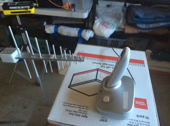
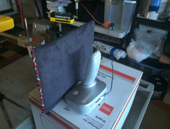

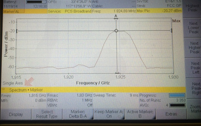
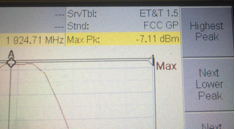
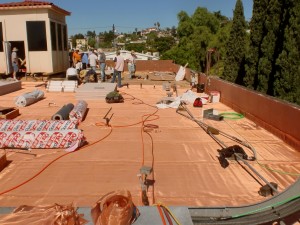 Cuprotect® is a company headquartered in Germany. The shielding material and system is now available through a distributor in the United States. Its founder, Wolfgang Kessel, developed a patented copper wire mesh RF shielding system for buildings. The system has one of the highest shielding effectiveness ratings in the industry. The Cuprotect® material is pliable, light weight, and any commercial, institution, or residential building can be retrofitted to reduce exposure to building occupants.
Cuprotect® is a company headquartered in Germany. The shielding material and system is now available through a distributor in the United States. Its founder, Wolfgang Kessel, developed a patented copper wire mesh RF shielding system for buildings. The system has one of the highest shielding effectiveness ratings in the industry. The Cuprotect® material is pliable, light weight, and any commercial, institution, or residential building can be retrofitted to reduce exposure to building occupants.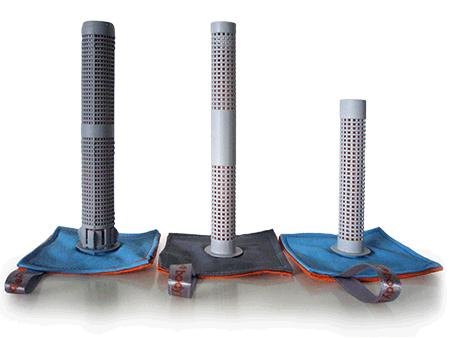 We are technical consultants for the implementation of Cuprotect® shielding systems in the US. Together with Cuprotect® and Premier Roofing, we completed the first commercial radiofrequency (RF) shielding project in the San Diego. A cellular tower is installed on the roof a two-story commercial building and the building owner wanted the exposure to his tenants and their clients to be reduced. The roof was going to be replaced, so the RF shielding system was integrated into the new roofing membrane and the indoor RF levels were significantly reduced.
We are technical consultants for the implementation of Cuprotect® shielding systems in the US. Together with Cuprotect® and Premier Roofing, we completed the first commercial radiofrequency (RF) shielding project in the San Diego. A cellular tower is installed on the roof a two-story commercial building and the building owner wanted the exposure to his tenants and their clients to be reduced. The roof was going to be replaced, so the RF shielding system was integrated into the new roofing membrane and the indoor RF levels were significantly reduced.